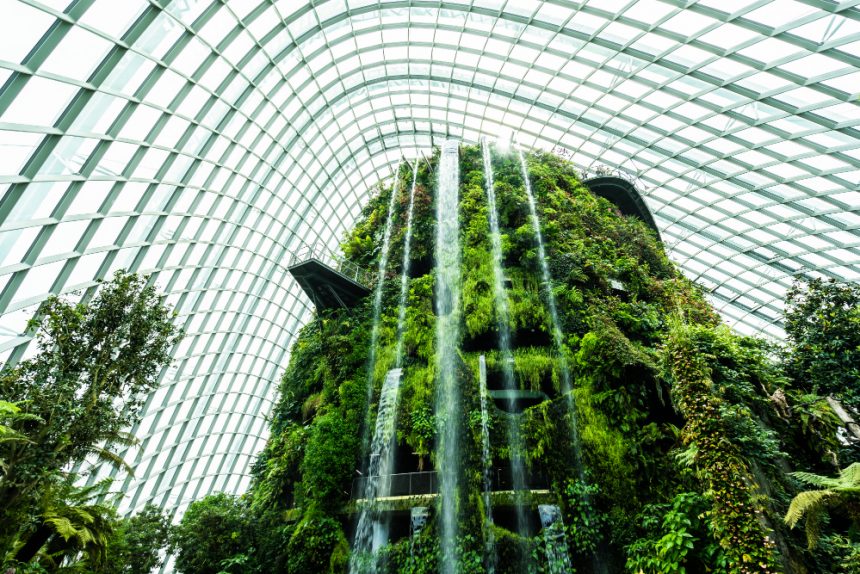Exploring the Future of Urban Landscaping: How Innovative Materials Are Transforming Vertical Gardens with Nature-Inspired Tech Solutions
In recent years, cities around the world have been craving more greenery—not just because it looks nice, but because green spaces provide numerous benefits like cleaner air, better temperature regulation, and a touch of natural beauty amidst concrete and steel. Vertical greening systems, which turn plain walls into living, breathing artworks, have become the go-to solution to add lushness to tight urban spaces. But what’s under the hood of these stunning green facades? It’s a fascinating mix of modern materials that cleverly blend nature-inspired design with cutting-edge technology.
Today’s materials are transforming vertical gardens from simple plant arrangements into high-tech ecosystems that are easier to install, more durable, and much more efficient. For example, lightweight bio-based panels mimic natural soil conditions and are easy to mount, reducing installation time and effort. Waterproof membranes—crafted using innovative materials—protect buildings from leaks while allowing excess moisture to escape, preventing root rot and structural damage. Some systems even integrate smart components like sensors that monitor soil moisture and nutrient levels, ensuring plants get exactly what they need without waste.
These advances do more than just support plant health; they unlock creative possibilities for architects, landscapers, and city dwellers eager to green their environments. Modern substrates are designed to optimize water retention and airflow, giving plants a cozy, natural-like environment even on the most challenging walls. Tech-powered irrigation systems can deliver water and nutrients precisely when needed, minimizing resource use and maintenance effort. Think of it as giving plants a technological upgrade—helping them thrive in adverse conditions, whether it’s a shaded alley or a south-facing building façade.
All of this points to a future where urban landscapes are smarter, more sustainable, and infinitely more beautiful. The convergence of science and sustainable design means we can create greener, healthier cities—one innovative material at a time. So, whether you’re a city planner, a passionate gardener, or simply curious about how technology is making our environments better, you’ll find plenty to marvel at in this evolving world where nature and innovation work hand in hand.
The Main Players in Modern Vertical Greening Materials: Innovative Solutions That Make Urban Green Walls Practical, Attractive, and Eco-Friendly
Creating a vibrant vertical garden isn’t just about planting climbers and shrubs on a blank wall; it’s about selecting the right materials that support plant vitality, streamline maintenance, and stand up to urban challenges like pollution, wind, and temperature swings. Thanks to advances in material science, today we have a whole toolkit of innovative products specifically designed for green walls—each with its own set of benefits, quirks, and best uses.
One of the primary materials used are modular panels made from recycled plastics and bio-composites. These panels are lightweight, customizable, and durable, making installation straightforward whether you’re working on a small balcony or a multi-story building. They can incorporate pockets for soil or hydroponic systems, providing a stable environment for plants to grow strong. Many of these panels are designed with sustainability in mind, made from biodegradable or low-impact materials that align with eco-friendly goals.
Waterproofing is another critical aspect, and modern membranes come packed with innovations like breathable, eco-friendly waterproof layers that prevent leaks without trapping moisture against the building’s structure. These membranes are often combined with insulating layers to help regulate temperature, protecting roots from extreme cold or heat.
On the technology front, some materials now include integrated irrigation channels or are compatible with smart sensors that monitor humidity and nutrients. These smart systems can be programmed to water plants exactly when they need it, cutting down on water waste and reducing maintenance chores. Additionally, self-watering substrates, which combine capillary action with moisture-retaining polymers, provide plants with a consistent water supply—great for busy city dwellers or commercial projects.
Sustainable thinking doesn’t stop at functionality; aesthetics matter too. Natural fibers like coconut coir, jute, or hemp are being used as biodegradable growth substrates, adding a rustic, organic look while promoting healthy root development. Manufacturing processes for these materials are increasingly low-impact, reducing their overall environmental footprint.
Ease of installation is another big plus. Many modern materials are designed for modular, snap-together assembly, so architects and contractors can quickly put together complex green walls without special tools or extensive training. Lightweight structures mean less load on the building, opening up green wall possibilities even for older structures not designed for heavy modifications.
In essence, understanding these modern materials helps you make smarter choices whether you’re planning a new building, renovating an existing one, or creating a cozy vertical garden space at home. The intelligent combination of durability, sustainability, and ease of use is what’s driving the surge of successful green walls across cities worldwide. As these innovative solutions mature, we can look forward to greener, more resilient, and more beautiful urban environments—proof that nature and technology can grow side by side in perfect harmony.







